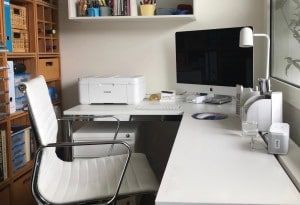Reducing Wastage As A Firm Via Property Inventory Management

As general citizens living day to day, it’s true that many of us have understood the value in reducing the wastage of our homes. Throwing out food is never a good feeling, for example, and so planning our daily intake of meals can help you avoid purchasing and ultimately never using a vital resource that someone else could have. The same goes for throwing out our possessions when donations to charity stores or selling them outright could be a
healthier option
.
Unfortunately, many businesses fail to conform to the same mindset. It’s not uncommon to see bakeries throwing out huge quantities of day-old pastries, for instance, despite those who are less fortunate going without. Thankfully, in these cases, initiatives like donation drives for supermarkets have helped the less fortunate in society have access to foods that cannot be legally sold as part of that brand.
With that kind of worthwhile initiative in mind, it’s healthy to look at how to decrease wastage in our own firm, especially related to the inventory and assets we acquire and use. In this post, we’ll discuss how to get the best out of that:
Consider Purchasing Used
You may be able to acquire large amounts of purposeful inventory should you purchase used. For instance, opting for excellent used office furniture can help you give a new home to perfectly good furniture that may have been thrown out otherwise. Not only this, but you could save vast amounts of money on this compared to purchasing new, while still giving your staff a worthwhile experience working in the office and sitting on ergonomic chairs and using ergonomic desks that improve their health in the long run.
Repurpose Inventory
From time to time, repurposing your inventory can be key in helping you get the most out of a given product. Instead of throwing out computer monitors that are no longer viable for the terminals you use, for instance, you could repurpose these as wall-attached displays you use to present your company logo and play introductory promotional material in your waiting rooms. You’d be surprised what kind of creative asset management you can apply should you avoid throwing goods out and find a way to subvert your storage requirements.
Large Job Lot Sales
A large job lot sale can do plenty for selling large quantities of inventory off. There are many people that browse auction sites for great deals when an office downsizes or upgrade their equipment. For instance, reselling your old office furniture at auction can help it find a new home compared to disposing of it. Additionally, making sure to sell to parts companies that deconstruct and recycle the inventory you may have to offer, perhaps from an old production line, can be key in ensuring wastage is reduced. To that degree, your office and manufacturing facilities can strive to lessen their impact going forward.
With this advice, we hope you can learn to reduce wastage as a firm via property inventory management.


